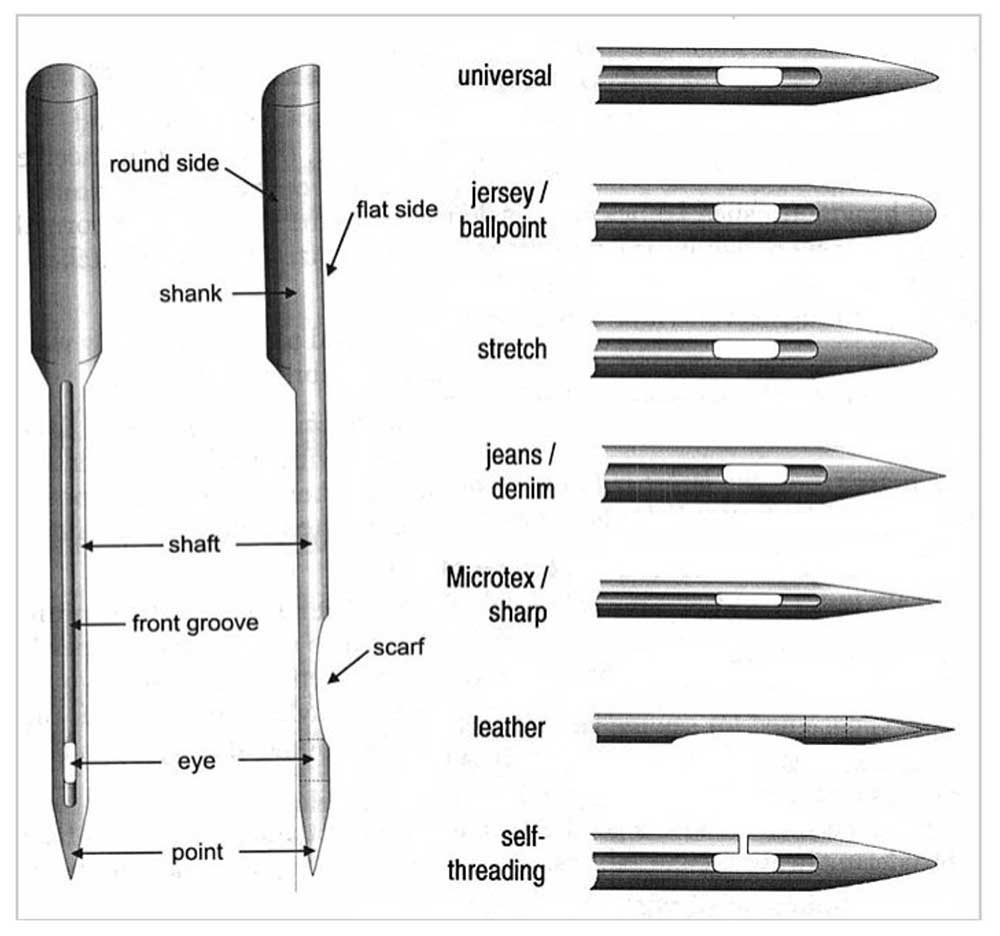The sewing machine needle has an anatomy that many of us have never examined. We take for granted that as long as the needle is properly inserted in our machines, they will do their jobs well. Learning more about the design and engineering that goes into this vital tool can assist us in selecting the perfect needle size and style for a specific job.

Here are the basic components of the domestic sewing machine needle:
Shank—The portion that is inserted into the machine and clamped into place, usually with the flat side toward the back of the machine.
Shoulder—The area that transitions from the shank to the shaft.
Shaft—A length of needle sufficient to carry the thread down through the material to the bobbin.
Groove—The cupped area along the length of the shaft that allows thread to be safely carried through the fabrics.
Scarf—The cutaway portion that allows extra room for the needle to pass very close to the shuttle or hook mechanism.
Eye—The hole through which the thread is placed in order to be carried through the material during stitching.
Point—The tip of the needle that allows the needle to safely pass through the weave or knit without making a tearing or cutting fibers.
The basic anatomy is similar across the needle family. Stark differences are more noticeable when you look more closely at the shape of the tip and size of the eye.
Universal—The most common type of machine needle made for the domestic machine. It has a sharp tip and comes in a variety of widths for fine, medium, and heavy weight fabrics.
Ball Point—This needle was created when sewing with knits became popular. The tip can easily slide between fibers and not cut or damage the fabric.
Stretch—These are made for use on fabrics with lots of stretch/Spandex or similar fabrics. The rounded tip, special scarf, and eye prevent skipped stitches.
Jeans/Denim—Intended for use on tightly woven fabrics with a strong sharp tip and rounded eye.
Microtex/Sharp—Designed to be more slender and sharper than the universal needle. Ideal for quilting and appliqué.
Leather—This needle has an identifiably larger tip for piercing leather and vinyl, providing an opening large enough to cleanly carry the thread through the heavy material.
Self-Threading—This particular style can be used when the ability to thread a needle is compromised.
Focusing on the intended purpose of a sewing machine needle can assist you in selecting the proper tool for the job. Having the right needle for your project or material can lead to a much more enjoyable quilting experience.
Thank you for this article it's very helpful
Great information about each type of needle!
I try to read your articles but it's not worth the trouble. You have2/3 or the page covered with adds for your site. I cannot find a way to see more than a few lines of text at a time. Even if I sign in there are problems navigating your site. I'm ready to give up.
I would like to find a self threading needle as I am unable to thread my own
Where can a self threatening needle be purchased